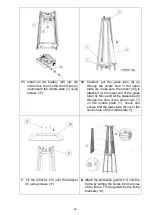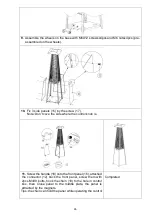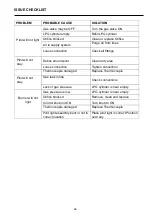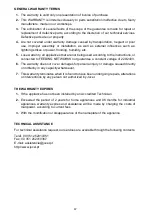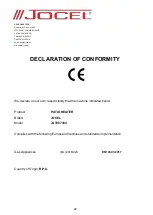
36
HEATER SUPPORT AND LOCATION
1.
The appliance is for outdoor use only. Do not use it for indoor or in an
enclosed area.
2.
Always keep at an adequate distance from combustible materials, that
is, the minimum safety distance is 80cm from the top and 65cm from the
sides.
GAS REQUIREMENTS
1.
Only use propane, butane or a mixture of these.
2.
The pressure reducer and hose assembly that is used must comply with local Standard
Codes.
3.
Installation must be in accordance with local codes, or in the absence of local codes,
the standard relating to the storage and handling of liquefied petroleum gases.
4.
A dented, rusted or damaged cylinder can be dangerous and should not be use. Never
use a tank with a damaged valve connection.
5.
The tank must be arranged so as to allow the removal of steam from the bottle in
operation.
6.
Never connect an unregulated tank to the heater
LEAKAGE TESTS
A gas leakage test must be performed again at the local installation. Please follow the
procedure below for leakage test:
1.
Make a soap solution of one part liquid detergent and one part water. The soap solution
can be applied with spray bottle, brush or rag. Soap bubbles will appear where a leak
is present.
2.
Make sure the control tap is in the “OFF” position (full disk = ●) on the control panel.
3.
Turn on the gas supply and check for bubbles from the hoses and connections. If a
bubble is viable this means that a leak path is present.
4.
If a leak is present, turn OFF the gas supply immediately, tighten any leaking fitting
carefully, turn gas again and recheck.
5.
Never leak test whist smoking.























